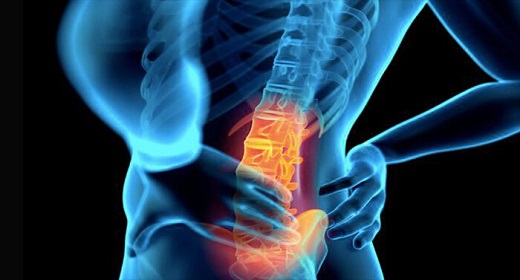by Mia Armstrong, MD: Back sleeping helps reduce pressure on your spine. This position mimics standing up straight…
Sleeping on your stomach with your head to one side is akin to having your head turned in one direction for hours while sitting or standing, causing soreness. It also compresses the spine because your neck is tilted back.
It’s much easier to give your spine rest by lying on the back, using pillows for comfort, and maintaining the natural curve of the spine.
A 2017 studyTrusted Source noted that sleeping on the back with both hands at the sides or on the chest is the best way to prevent pain.
If you’re lying on your belly or side, you may be crowding your breathing space.
The diaphragm is the muscle responsible for breathing, and compressing it makes your breathing shallower.
Multiple studies have linked deep diaphragmatic breathing while waking with:
- reduced stress
- improved mood
- improved attention span
A 2018 studyTrusted Source noted that slow, deep breathing results in melatonin production, a hormone that promotes relaxation, induces sleep, and increases parasympathetic nervous system activity.
Face washing, keeping hands away from your face, and reducing sugar consumption are frequently discussed solutions for clear skin. What about what happens while you sleep?
Pillowcases absorb sebum from the skin and hair as well as product residue. These are easily transferred to the face while sleeping.
This can contribute to skin issues, like:
- blackheads
- whiteheads
- redness and irritation
While satin, silk, or copper pillowcases may help, why not avoid pillow-skin contact altogether?
Back sleeping keeps the face away from the pillowcase and, by extension, the dirt and oils that can irritate it.
Sleeping on your face can pinch, pull, and irritate your skin, resulting in wrinkles. When your face is directly on the pillow, the resulting friction can cause wrinkles and lines.
The same applies to the neck, which can get scrunched and tweaked while sleeping on your stomach.
Back sleeping also helps keep your skin care products on your face and off of the pillowcase.
By back sleeping, you avoid face-to-pillow contact and keep the neck straight, preventing the premature development or deepening of wrinkles and lines.
When lying on any part of your face, fluid pools in that area.
Fluid buildup causes puffiness around the eyes and swelling in the face. By lying on your back, you discourage this pooling and reduce puffiness.
Be sure to elevate your head a bit to help control where the fluid goes. This can help you avoid bags and puffiness, so you can wake up looking as rested as you feel.
Sleeping with your head elevated above your heart helps to relieve congestion and prevent clogging of your nasal passages. When the head is down, mucus pools in the sinuses.
If you prop up your head, gravity will do its part to help drain mucus and keep your airways clear.
According to a 2016 reviewTrusted Source, this position also helps with acid reflux, also known as gastroesophageal reflux disease (GERD).
Similar to its effect on your neck and spine, back sleeping takes the pressure off of your head.
Cervicogenic headaches, or headaches rooted in the cervical spine, start in the neck and are often mistaken for migraines. Symptoms may include:
- throbbing pain on one side of your head or face
- stiff neck
- pain near the eyes
- pain when coughing or sneezing
- light and noise sensitivity
- blurry vision
- upset stomach
- pinched nerves
By keeping your head, neck, and spine in a neutral position, you alleviate pressure and avoid pain.
Pro tip: Even while sleeping on your back, it may be habitual to turn your head. Use pillows to give neck support and prevent your body from giving in to temptation.
When face up, you more readily notice changes in light.
As sunlight streams into your bedroom, you can better receive the signal from the sun that it’s time to wake up.
You may find this way of waking up more pleasant than the sound of an alarm clock. Plus, light helps regulate your circadian rhythm, so you can sleep and wake up at optimal times.
If you want to give back sleeping a go, be sure to have multiple pillows and a rolled-up towel handy.
Try putting a pillow under your knees or a rolled up towel under your lower back. This will help to support your body in areas with natural curves and shift pressure from your back.
There are also plenty of products on the market that can help your transition to supine sleeping go as smoothly as possible.
Wedge pillows can help with head elevation, and a bolster pillow can go under the knees to support the lower back.
It can also help to create a bedtime routine to simplify falling asleep in an unfamiliar position, similar to sleeping in a different bed.
Consider:
- a warm beverage
- low lighting in the hours before bedtime
- meditation
- relaxing scents, like lavender
- less screen time before bed
While there are plenty of different ways to sleep, back sleeping offers multiple benefits that are hard to ignore, including:
- improved breathing
- reduced back pain
- smoother, clearer skin
If you decide to make the switch, take your time and arm yourself with tools to make the transition as easy as possible. Once you go for it, you’re likely on your way to sweeter, sounder sleep.
Alicia A. Wallace is a queer Black feminist, women’s human rights defender, and writer. She’s passionate about social justice and community building. She enjoys cooking, baking, gardening, traveling, and talking to everyone and no one at the same time on Twitter.

















































